It’s been over six months since I announced on reddit my intention to re-release Override.
A lot’s happened since then. Most important has definitely been making contact with snijj (aka Tom Hancocks), who had already been working for some years on the foundations of a new EV engine. Both of us were at a point where we were keen for a project like this, and we were able to reach an agreement very quickly.
Perhaps less productive, but equally necessary, were a series of attempts to track down and contact and then have various discussions with other involved parties, including Matt Burch (Escape Velocity’s creator), and representatives of Ambrosia Software and ATMOS. In an ideal world, we would have liked to re-release all the Escape Velocity games on the new engine, beginning with the original. Regrettably, we were not able to reach agreements to that end, and even had to drop the ‘EV’ title itself. However, we’ll see what the future brings in this connection: if our initial project is successful, perhaps the rights-holders for the other EV scenarios will reconsider.
All that meant that it wasn’t until the start of 2020 that we finally had a clear picture of what exactly our project was going to be, and were in a position to plan out what we needed to do ahead of a Kickstarter campaign.
The upshot of all this is that most of my time spent on the Cosmic Frontier project so far has amounted to work as a producer — that is, doing whatever needs to be done to make the project happen (or get someone else to do it) — rather than as a developer. Most of what development time there’s been has been turned towards broad foundational thinking about what needs to be changed, what should not change, what may change, or be added, etc. Should the Kickstarter campaign go well, I am looking forward to being able to change focus back towards the nuts and bolts of scenario design.
—
That being said, I can show you one area in which I’ve done some design work. Something that’s always obvious when replaying any EV game on a modern display, even at less than full resolution, is that the sizes seem off. Even the largest ships seem small, and weapons ranges seem shorter (even if they are the same in pixel terms).
Thanks to my public release of them many years ago, we still have access to all the original ship models. Most likely, and especially if we hit our ‘Graphical Upgrade’ stretch goal, these will not be the final models used for the release version, but it’s extremely valuable to have them. I was able to refamiliarise myself with a lot of old habits while re-rendering them at new scales.
Ships in EV games have never been displayed in direct proportion to their supposed in-universe sizes, since they go from tiny fighters and shuttles up to enormous battleships, any of which might be piloted by a player. But modern displays and resolutions mean that it makes sense to go well beyond the 96×96 pixels that was typical for the largest ships in the original games. Essentially, the smallest ships have remained the same size (one or two have even got smaller), and the larger a ship is the more it has been scaled up: for example, the Arada has only gone from 48×48 to 56×56, while the U.E. Cruiser has gone from 96×96 to 160×160.
Below are some before-and-after screenshots (the same systems, not exactly the same lay-out of ships) to give an idea of the changes.
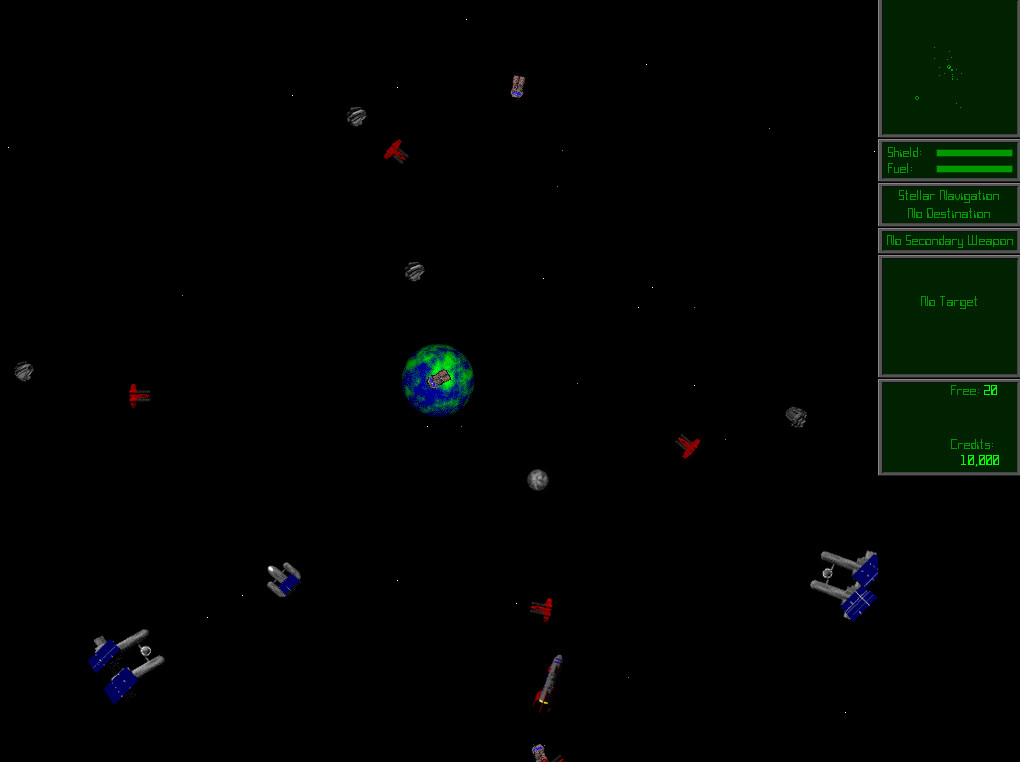
Sol system, before
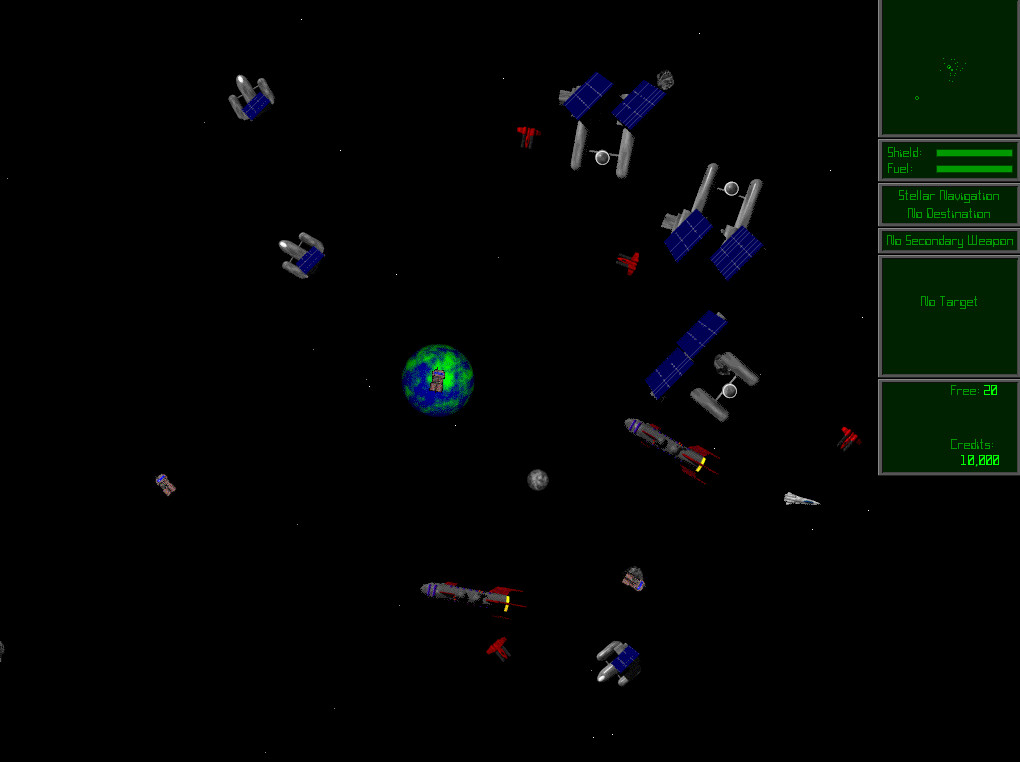
Sol system, after
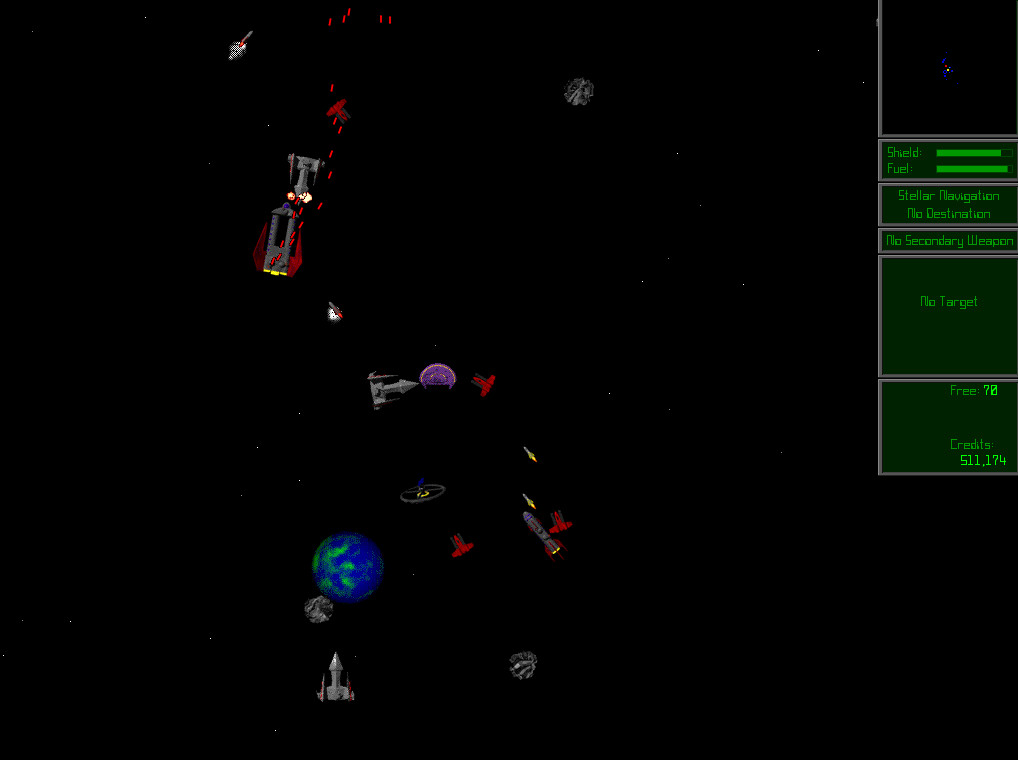
Bakka system, before
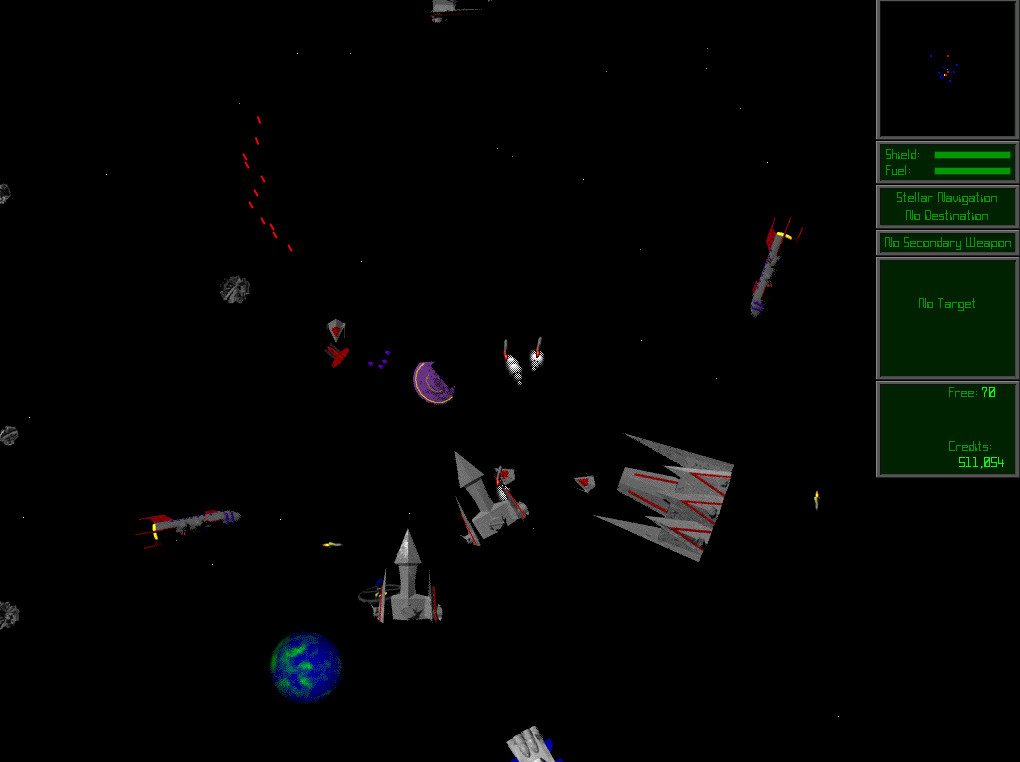
Bakka system, after
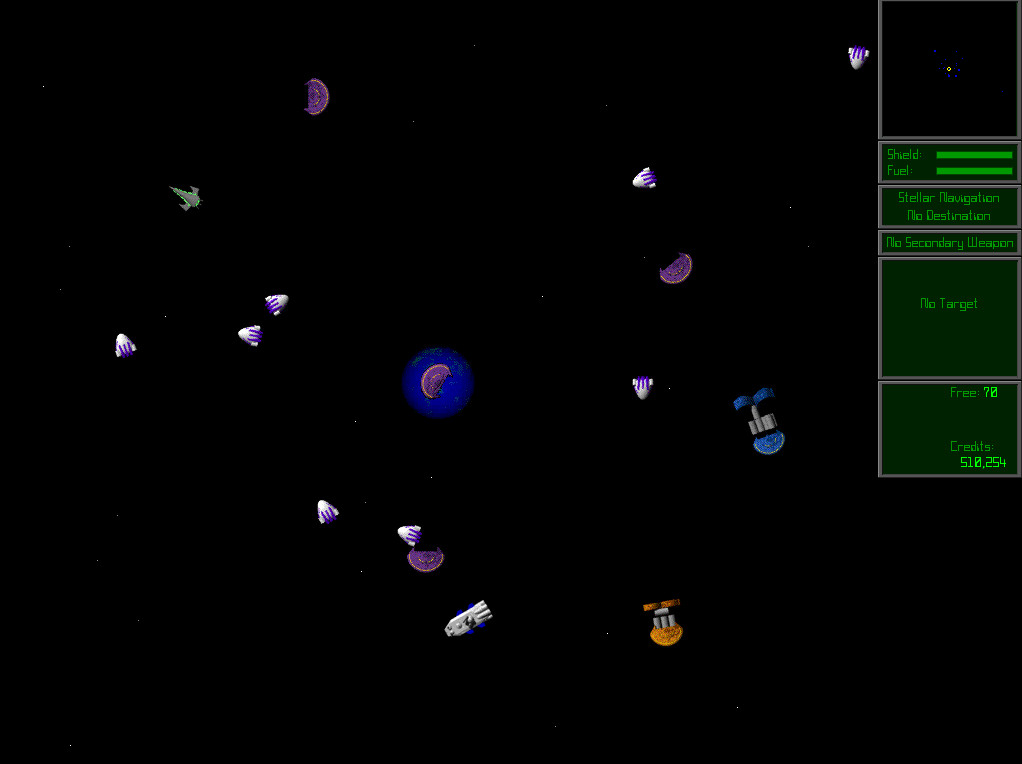
Mirava system, before
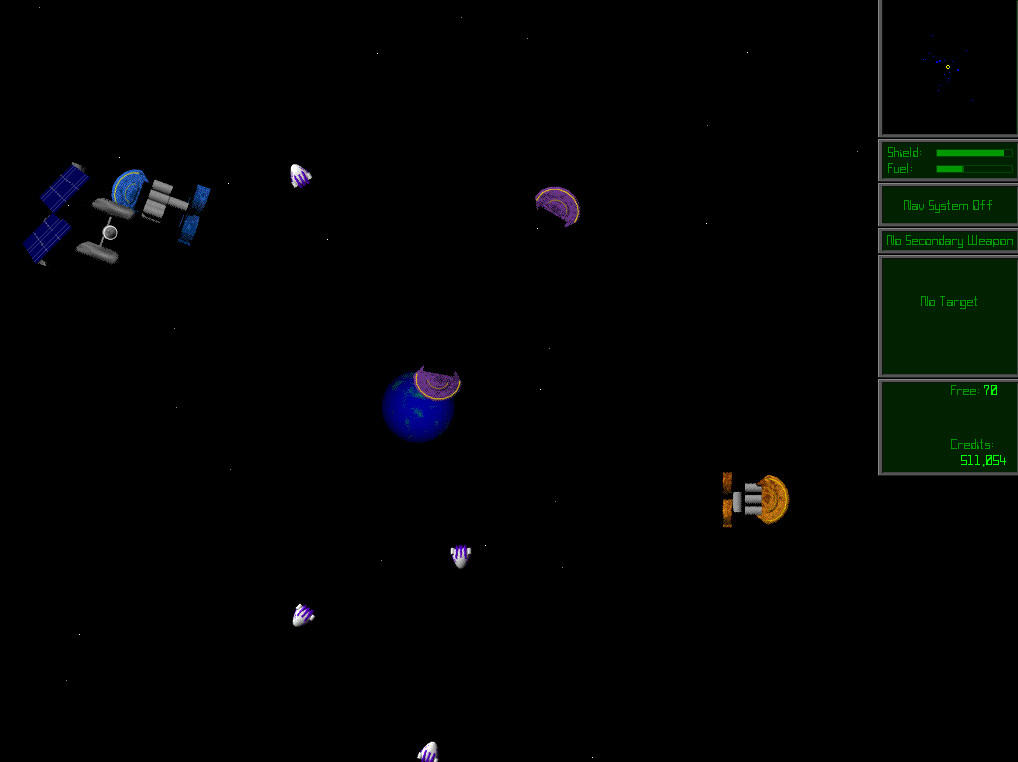
Mirava system, after
I still haven’t decided whether the scaling up has gone far enough! There’s certainly some room to make the larger ships bigger still. However, since we will probably be using new models for the ships in the release version, it doesn’t make sense to try to get to a final state right now.
And the screenshots throw up a bunch of other aesthetic questions that we’ll be looking at. For instance, planets in EV games have always been pretty small relative to ships, but the re-scaling probably puts it over the edge. New, larger planet graphics will certainly be needed. We need to decide what to do with the status bar: if it’s going to be extended down the whole right-hand side of the screen, that’s room for it to have new panels providing more information (but what exactly?). Even something as basic as the starfield could probably afford to look a bit more dynamic than the occasional white dot.
For now though, with the Kickstarter campaign imminent, my focus is on PR: spreading the word and fielding questions about the project as we attempt to drum up interest. Part of the value, and part of the challenge, of a project like this with a small team is that you have to do a lot things that fall outside your comfort zone.
In the future (and assuming a successful Kickstarter campaign), these development blogs will be at least bi-monthly, alternating with Tom’s to provide our backers with continual updates on our progress.
